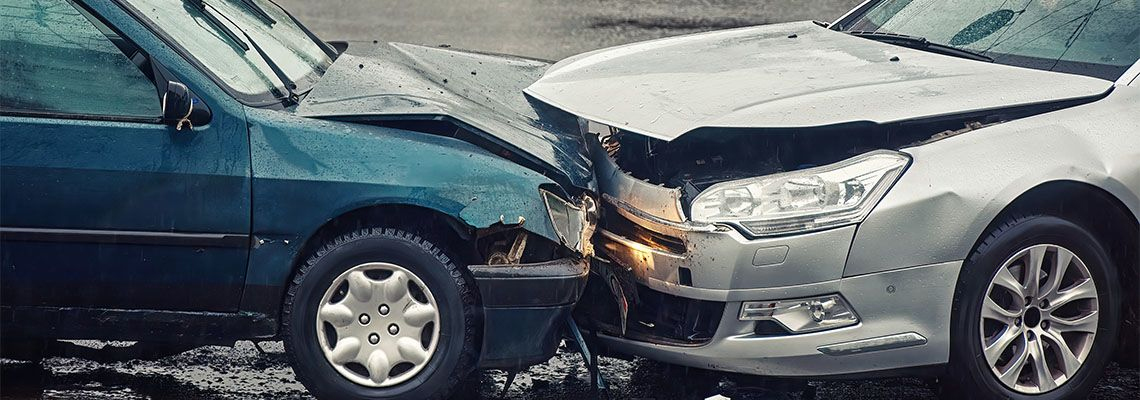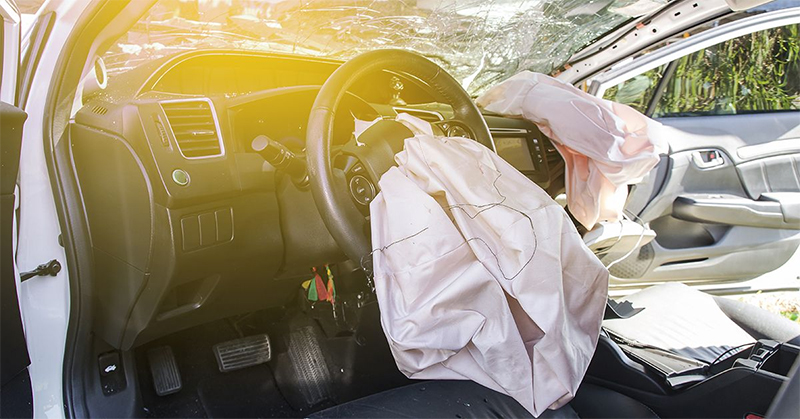Top Rated New York City Head-On Collision Lawyer in Just One Call
New York City Head-On Collision Lawyer
Find out why we are some of the best New York City head-on collision lawyers
New York City Head-On Collision Lawyer
Have you or a loved one recently been injured in a head-on collision? Our New York City head-on collision lawyers can help determine if you have a case. Call us today at (646) 719-0444 for a free consultation. Pay nothing unless you win.
What is a Head-On Collision?
A head-on collision is a vehicle accident where two vehicles traveling in opposite directions collide.
This type of multi-vehicle crash is often considered one of the most severe and dangerous types of motor vehicle accidents, as it typically involves both vehicles crashing head-first into each other at high speeds.
Head-on collisions can cause severe physical injuries to accident victims, property damage, and even fatalities to those involved.

New York City Head-on Accident Injuries
Motor vehicle head-on crashes are some of the most severe and deadly car crashes that can occur on our roadways.
Injuries that may present after a head-on vehicle collision may include:
- Brain injuries
- Burn injuries
- Facial injuries
- Broken bones
- Knee injuries
- Shoulder injuries
- Spinal Cord Injuries
- Whiplash
If you have a loved one who has passed away in a head-on collision, contact our NYC wrongful death lawyers for legal representation.
Related Information
Causes of Head-On Collisions
Distracted driving is a significant factor in many head-on collisions that occur on our roadways.
With so many distractions available to drivers, it is becoming increasingly common for drivers to engage in activities that take their focus away from the road.
Texting has become one of the most common distractions while operating a vehicle. When a driver is texting or using their phone while driving, they are not paying attention to the road ahead of them, and it only takes a moment of losing focus for a distracted driving accident (including a head-on motor vehicle collision) to occur.
Other forms of distracted driving can include eating or drinking, applying makeup, changing the radio station, or even talking to passengers in the car.

Rain, snow, sleet, and other precipitation can make it difficult for drivers to see the road ahead. This can make it challenging for drivers to stay in their own lane and avoid oncoming traffic.
Fog and other weather-related factors can reduce visibility, making it harder for drivers to see other vehicles or obstacles on the roadway.
At night, poor weather conditions can result in glare from headlights that can blind drivers and make it even harder to see the road in front of them.
Even experienced drivers can struggle to control their vehicles when weather conditions are poor.
In some cases, they may be forced to slow down, increasing the risk of an accident. In other cases, they may be caught off guard by a sudden storm or other weather-related events, leading to a head-on collision.
Head-on collisions caused by poor weather conditions often result in severe injuries or fatalities.
Common injuries include:
- Broken bones
- Brain injuries
- Internal organ damage
- Other serious injuries
- Spinal Cord Injuries (SCI)
During inclement weather, drivers must take necessary precautions to prevent potential head-on collisions.
This may include driving slower than the posted speed limit, allowing extra space between vehicles, and using caution when changing lanes or passing other vehicles.
By practicing safe driving techniques during adverse weather conditions, drivers can reduce the risk of causing a head-on collision.

Driving while fatigued or over the legal limit for alcohol are some of the leading causes of head-on collisions on our roadways. Drunk drivers or drivers driving while feeling fatigued are at a high risk of causing an accident that results in serious injuries or fatalities to crash victims.
Drowsy drivers may experience impaired judgment and slower reaction times. Drivers under the influence of drugs or alcohol can experience similar effects. Impaired vision, loss of coordination, and other symptoms can make it difficult to control their vehicle.
These fatigued driving accidents result in serious injuries such as broken bones, traumatic brain injuries, spinal cord damage, neck injuries, and internal organ damage, which can result in long-term medical treatment and rehabilitation.
The injured party may experience emotional distress and trauma associated with the accident, which can impact their lives and those of their loved ones.
A prudent person should never get behind the wheel if they have consumed alcohol, as doing so can lead to drunk driving accidents.
If someone is feeling fatigued, they should stop and rest before continuing to drive, and if someone has consumed alcohol or drugs, they should find a safe and responsible way to get home. [1]
Inexperienced drivers often lack the necessary skills and knowledge to navigate a vehicle on the roadways safely.
They may struggle with basic concepts such as maintaining a safe speed or staying in their own lane. They may also be unaware of common driving hazards leading to head-on collisions.
Inexperienced drivers may not recognize the signs of an oncoming vehicle or be unaware of how to pass another car on a two-lane road safely. An inexperienced driver may also be more likely to panic in a challenging or unexpected situation, leading to poor decision-making and, ultimately, a head-on collision.
Another factor contributing to inexperienced drivers causing head-on collisions is a lack of familiarity with their vehicles. New drivers may not understand how their vehicle handles or how to react in an emergency. This lack of familiarity can make it difficult for them to make split-second decisions that can prevent a head-on collision from occurring.
Inexperience often means new drivers are less confident in their driving skills, leading to nervousness and indecision on the roadways. This can be particularly dangerous when driving in high-traffic areas or inclement weather conditions.
Inexperienced drivers may be more likely to take risks behind the wheel. They may engage in behaviors like speeding, distracted driving, or driving while under the influence that can increase the risk of causing a head-on collision.
Youthful exuberance can also lead new drivers to overestimate their driving ability and engage in reckless driving behavior, such as drag racing or driving while being chased by the police. These choices can lead to severe injuries or fatalities. A fatal car accident for a young adult can devastate their family, friends, and community.
Additional training, such as defensive driving courses, can be helpful for inexperienced drivers to acquire the necessary skills for handling hazardous driving scenarios.
Educating and guiding inexperienced drivers can help prevent head-on collisions caused by inexperience and create safer roadways for all drivers and passengers.
Poorly maintained or defective roads can create hazards for drivers, such as potholes, cracks, or debris on the roadway. These dangerous road hazards can cause a driver to lose control of their vehicle or swerve into oncoming traffic, leading to a head-on collision.
Poorly marked or confusing roadways can mislead drivers and lead them into oncoming lanes of traffic, a scenario that can also result in a head-on collision.
Vehicles that are improperly maintained or have defective parts can cause the driver to lose control of their car.
Faulty brakes or worn tires can prevent the driver from stopping or changing direction quickly, leading to a head-on collision. In some cases, defects in vehicles can cause them to malfunction unexpectedly, leading to an accident. If a head-on collision was caused by a defective road or unsafe vehicle, holding the responsible parties accountable for their negligence may be possible.
In these cases, the parties responsible for maintaining the roadway, such as the city or state department of transportation, or the manufacturer of a defective vehicle part, may be held accountable.
Injured people who have suffered in one of these accidents can seek fair compensation for their injuries, medical costs, lost wages, and non-economic damages related to the accident.
Speeding and reckless driving are common causes of head-on collisions on our roadways. When drivers speed or drive recklessly, they are more likely to lose control of their vehicle and cross over into another traffic lane, leading to a head-on collision.
Speeding can also make it more difficult for drivers to stop or react quickly to avoid an accident. Reckless driving behaviors such as weaving in and out of traffic, tailgating, or passing in a no-pass zone can lead to head-on collisions.
Speeding or driving recklessly can have devastating consequences, including severe injuries or even fatalities, for all those involved in an accident.
Drivers who consistently engage in unsafe behaviors should be held accountable for their actions, which can entail criminal penalties, fines, and civil suits if they are found to be an at-fault party for a head-on collision.
Statute of Limitations for A New York City Head-On Collision
The statute of limitations for a New York City head-on collision is the time limit within which head-on collision victims can file a personal injury lawsuit against the responsible parties. In New York, the statute of limitations for personal injury lawsuits related to head-on collisions is typically three years.
Contact our NYC personal injury lawyers as soon as possible, as the legal process can be complex, and waiting too long to file may result in losing the right to file a lawsuit.

Liability in Head-On Collisions
- If a negligent driver caused the accident, they may be held liable for any injuries or damages sustained by the other party.
- If a defective part caused the accident, the manufacturer or distributor of the vehicle or the defective part may be held liable.
- Suppose a head-on collision was caused by poor road conditions, such as a pothole or poorly marked lanes. In that case, the government entity responsible for maintaining the roadway may be held liable for any injuries or damages sustained.
- Suppose the driver involved in the head-on collision acted on an agency's behalf, such as a city bus or taxi driver. In that case, the agency may be liable for any injuries or damages.
The exact liabilities in a head-on collision will depend on the accident’s circumstances.
Goldberg & Loren is a premier personal injury law firm in New York City that specializes in helping victims of head-on collisions.
We have decades of experience representing clients injured in car, truck, motorcycle, pedestrian, and other motor vehicle accidents.
Our accident lawyers at Goldberg & Loren understand that head-on collisions can have devastating consequences. We fight to help our clients receive the full and fair financial compensation they deserve for their injuries, lost wages, pain and suffering, and other damages.
If you or a loved one has been injured in a head-on collision caused by another driver’s negligence, Contact Goldberg & Loren to learn more about your legal options.
Source:
[1] Driving While Drowsy Can Be as Dangerous As Driving While Drunk | Sleep Foundation. (2021, January 15). Sleep Foundation. https://www.sleepfoundation.org/drowsy-driving/drowsy-driving-vs-drunk-driving
Goldberg & Loren Personal Injury Attorneys
5 Columbus Cir Suite 1501,
New York, NY 10019
(646) 719-0444

Have you been injured in a head-on collision? We may be able to help. Find out if you have a case!
George Goldberg
Senior Partner
Have Questions About Your Case? Call Us Today: